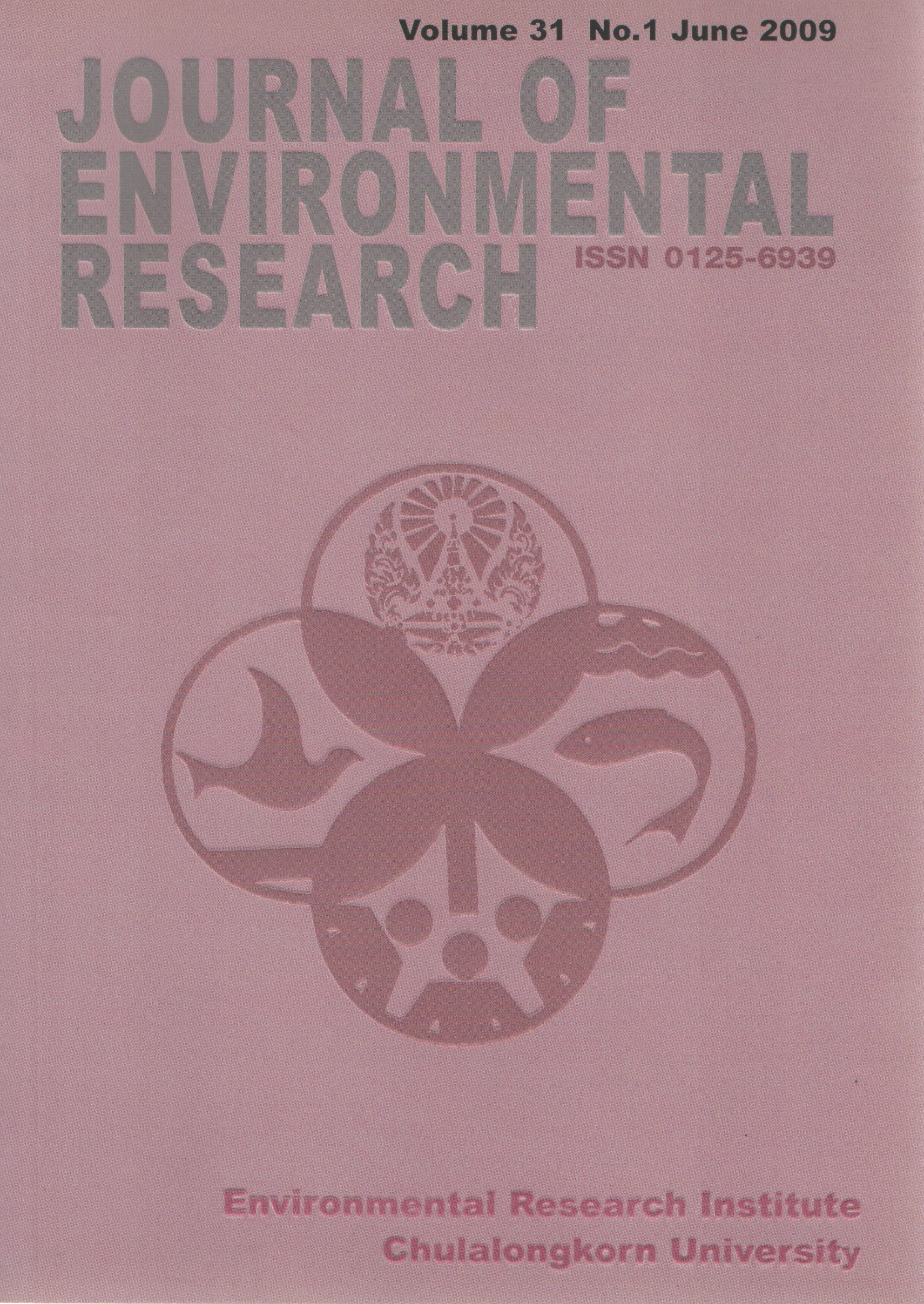Adsorption of Lead Ions from Synthetic Wastewater Using Oyster Shell
Main Article Content
Abstract
The obJective of this work was to study the adsorption ability of various Pb+ ion concentrations by oyster shell (Crassostre commercialis) Oyster shells were prepared by 2 different methods. For the first method, oyster shell was washed with distilled water, dried in the oven at 105°C then, crushed and sieved to particle size of 75-106 m in diameter. This was called OS-A For the second method. oyster shell was crushed and burnt in furnace at 850°C for 2 h, then, sieved to particle size 75-106
m in diameter. This was called OS-B. The results of the adsorption experiment showed that adsorption reached equilibrium within 120 min with eighty four percent of Pb2+ was removed from 100 mg L-1 initial concentration. Moreover. Langmuir and Freundlich adsorption isotherms were used to fit the experimental data. The results showed that both Langmuir and Freundlich adsorption isotherms fitted the experimental data very well with high correlation coefficient (R2) The high Kf value implied that the Pb2+ ions adsorption capacities of both OS-A and OS-B were high. The maximum Pb2+ adsorption capacity (qm) of OS-A and OS-B obtained from Langmuir adsorption isotherm were 196 and 233 mg-metal g-1-adsorbent, respectively.
Article Details

This work is licensed under a Creative Commons Attribution-NonCommercial 4.0 International License.
Published articles are under the copyright of the Applied Environmental Research effective when the article is accepted for publication thus granting Applied Environmental Research all rights for the work so that both parties may be protected from the consequences of unauthorized use. Partially or totally publication of an article elsewhere is possible only after the consent from the editors.

